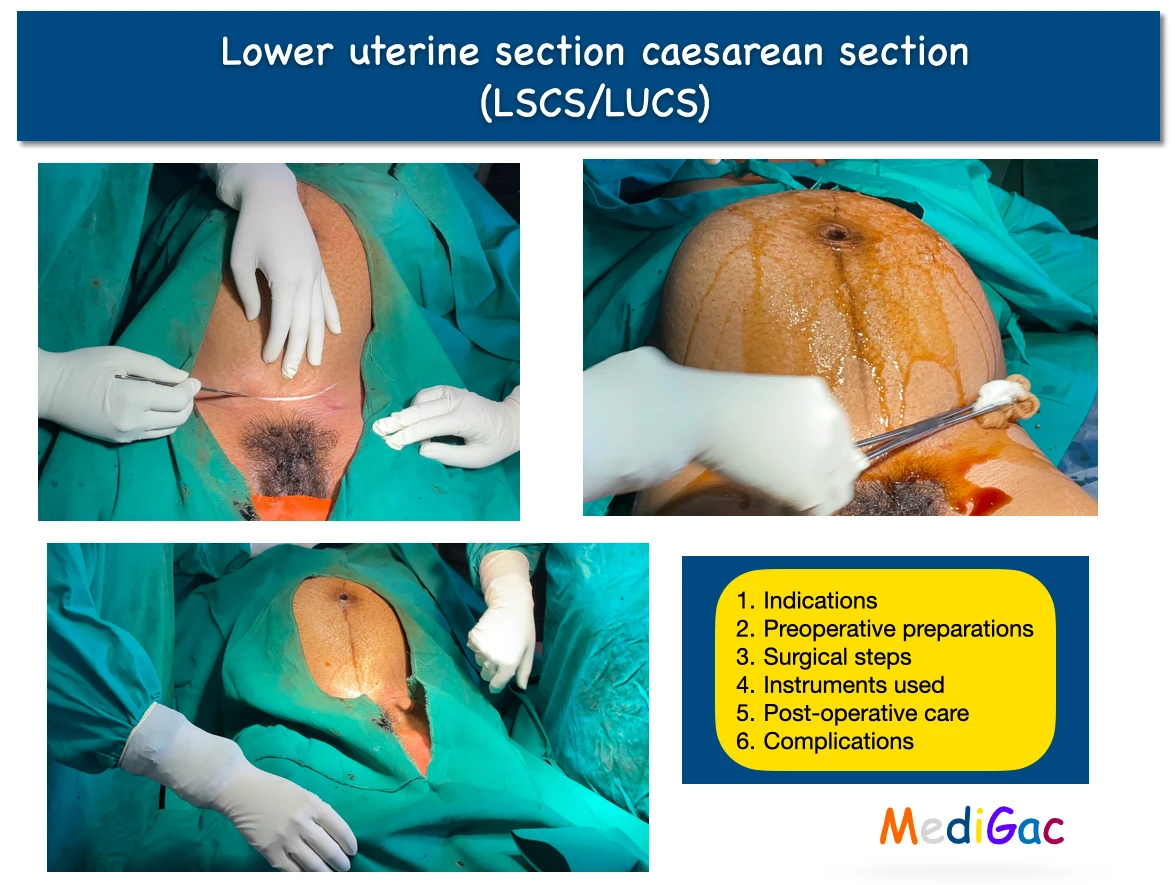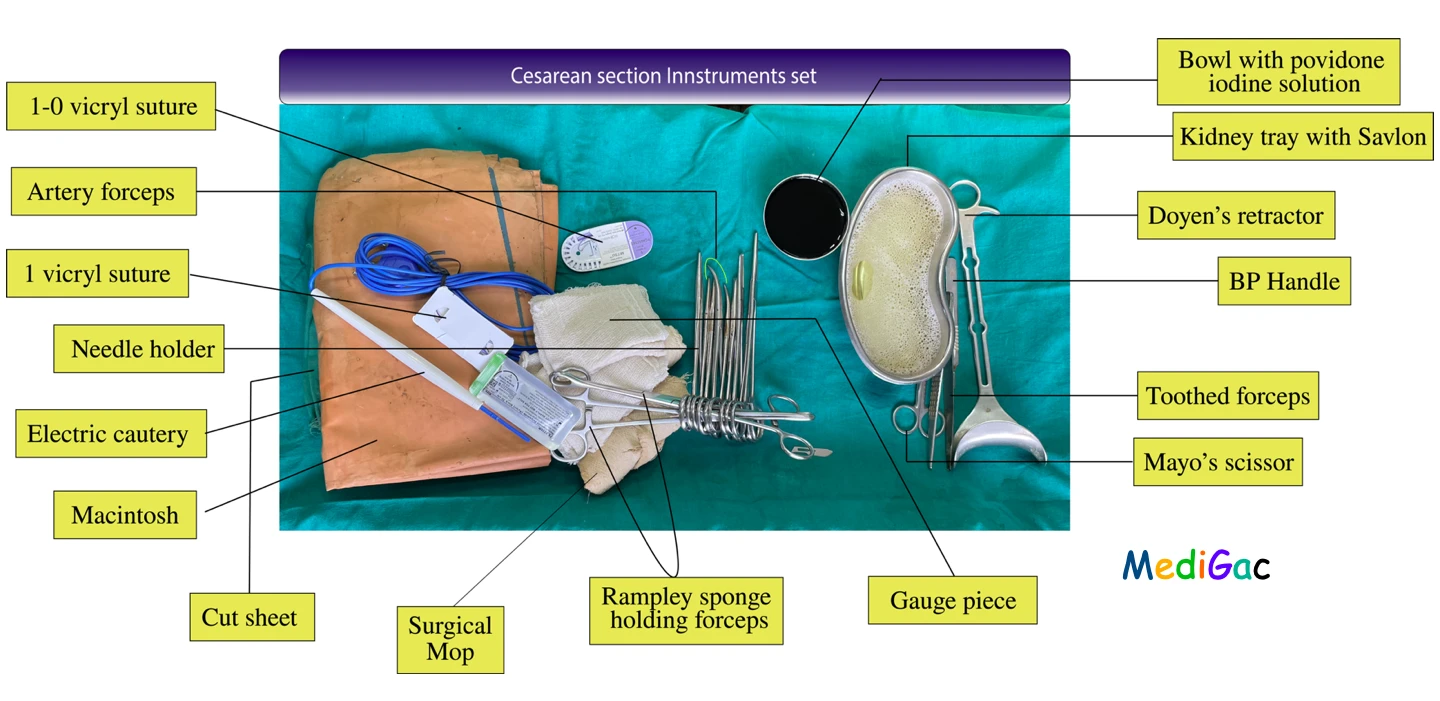
We have discussed – Indications, Surgical steps, Surgical Instruments,Post-operative care, Complications.
The foetuses are delivered surgically after the end of the 28th week by an incision on the abdominal and uterine walls. Primary caesarean sections are done on patients during their first pregnancies, and repeat caesarean sections are performed during future pregnancies.
1. Indications of LSCS :
A. Absolute indications :
- Vaginal obstruction. Like small vaginal opening, atresia and stenosis.
- Central placenta previa.
- Contracted pelvis disproportion.
- Pelvic mass.
- Advanced carcinoma of cervix.
B. Relative Indications :
- History of previous cesarean delivery.
- Antepartum haemorrhage.
- Non reassuring FHR.
- Malpresentation like breech, transverse lie, brow presentation.
- Dystocia – Large foetus(Passenger), Small pelvis(Passage), Inefficient uterine contraction(Power).
2. Preoperative preparations LSCS :
- Use soap and non-organic iodine lotion to scrub the abdomen. Hair can be cut short.
- IV cannel and fluid is given. Normally RL fluid is used.
- Stomach should be emptied.
3. Surgical steps of LSCS :

4. Surgical Instruments used in LSCS :

5. Post-operative care LSCS :
A. First 24 hours :
- In the first 6-8 hours, the patient should be kept in good observations. Periodically BP, Pulse and Bleeding per vagina should be measured.
- NPM till further advice.
- Fluid administration – NaCl(0.9%) or Ringer’s lactate should be infused at least 2-2.5 L.
- Prophylactic antiobiotics to be given.
- Inj Oxytocin to be charged.
- Inj PCM.
- Inj Ranitidine.
- Inj Ondansetron.
B. Day-1 :
- Oral feeding – Black tea or simple electrolyte water can be given orally as a type of nutrition.
C. Day-2 :
- The patient is offered a light, solid food of their choice. If the bowels do not move naturally, three tablespoons of lactulose are administered at bedtime for bowl care.
D. Day – 5/6 :
On day-5 or day-6 we can remove the skin stitches.
6. Post-operative complications of LSCS :
- Postpartum haemorrhage.
- Deep vein thrombosis and thromboembolic disorders.
- Shock due to blood loss.
- Intestinal obstruction.
- Infection of urinary tract, abdominal wound and peritoneal cavity.
- Wound complications like heamatoma, collection of pus, burst abdomen.